Dropping Toxic Toothpaste
- Devin Joubert

- Feb 26, 2024
- 8 min read
I love brushing my teeth. There's nothing that makes you feel AWAKE like fresh clean teeth. Right?

We used to use the popular toothpaste brands in our house, but since doing research on ingredients I've been making my own. Yup, I never thought I'd say that, but there are benefits to making your own: 1. You know what ingredients are in it. 2. You save money. 3. You don't have to pay tax on it. (At least, I don't have to since all the items I use to make it are considered food items in North Dakota, which isn't taxed in North Dakota.)
So I feel really good about saving money and also having better ingredients in my and my hubby's mouths. This is something I'm striving to do to help our home have a smaller footprint, be healthier, and help us save money.
Am I Really Saving Much?
Here's a screen shot of toothpaste options from Costco, which is where I usually bought ours. The toothpaste I bought was the Crest 8 pack in the first picture or the Crest Advanced Whitening in the second picture.


So that would have either been $11.99 or $17.99
So for the $11.99 option: You get a tube (8 tubes) for $1.50 plus tax. I haven't added any tax to these prices.
So for the $17.99 option: You get a tube (5 tubes) for $3.60 plus tax. Tax hasn't been added.
Redmond's Earth Paste is a healthier brand of toothpaste without all the crud in it, it's currently at $9.29 for one tube.
Now, how much toothpaste would you buy in a year?
The World Health Organization (WHO) has recommended the yearly use of 6 tubes of toothpaste of 170g each and 4 toothbrushes per individual.
If we think of it that way, in my house, it's only my hubby and I so that means 12 tubes of toothpaste. 👀 With kids that will be a lot more.
So for that we could buy two of the $11.99 option and it would be enough for a whole year, which it would end up costing $23.98 before tax.
For the $17.99 option, we'd have to buy three which would end up being $53.97 before tax.
For Redmond's Earth Paste is would end up being $111.48 before tax. This was also a smaller tube, so you might end up needing more than six tubes per person.
I mean, I know that some of those might not seem like much, but imagine being able to use that money elsewhere. You could use it to buy things you can actually eat or even pay for a tank of gas with it instead?
Besides that, I haven't even touched on the ingredients in that toothpaste that you're paying an arm and a leg for. Make sure you read this whole blog post so you can get the toothpaste recipe I have that I've been using.
What Are The Bad Ingredients In The Toothpaste?
Toothpaste is considered a cosmetic and in the cosmetics world, there are a lot of things that aren't regulated.
So when that comes to toothpaste, that means whenever you put it in your mouth it can absorb into your body.
There are actually many bad ingredients that you don't want in your mouth.
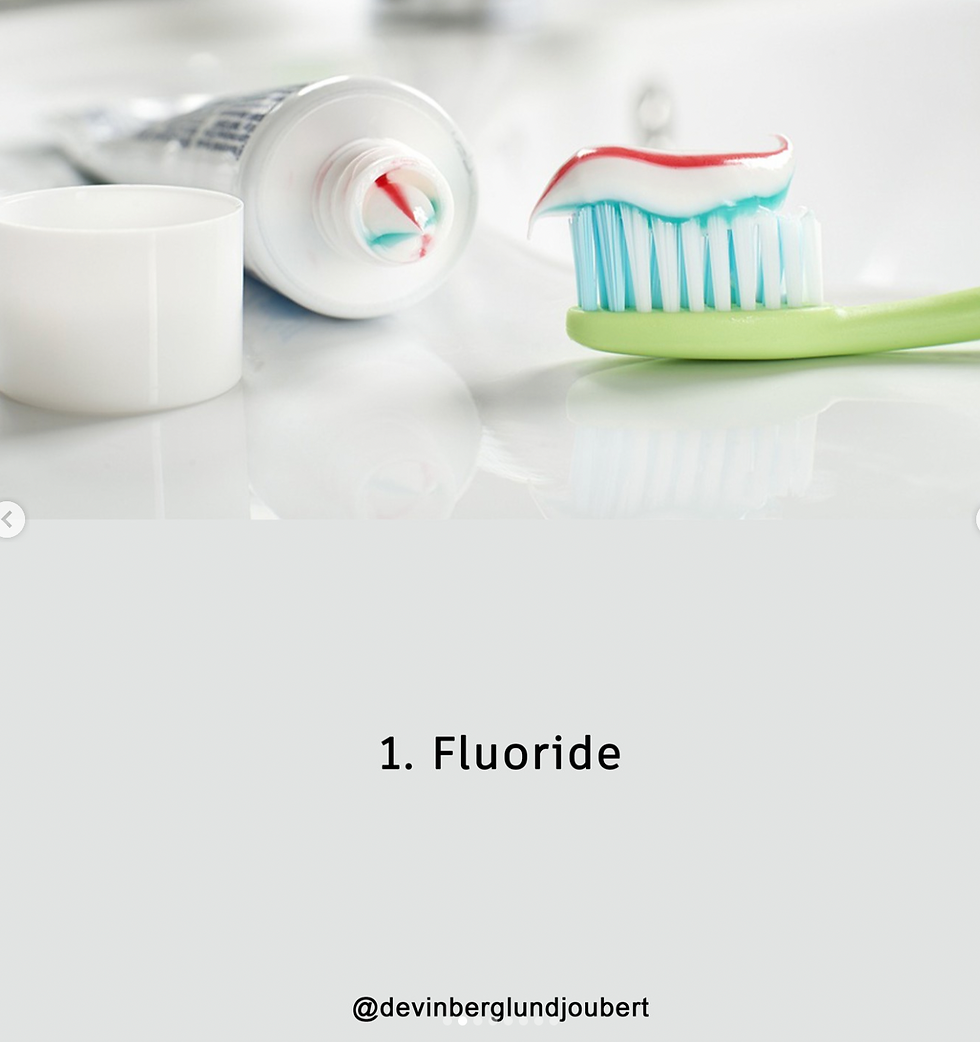
Fluoride can pass through the blood brain barrier and also through the placenta to a newborn baby.
About half of the fluoride a person ingests through any water or food is passed through the urine and the other 50% settles in the bones and teeth.
Dr. Axe mentioned that the possible dangers of fluoride are: "May cause damage to the brain and central nervous system, associated with moderate cancer risk, could increase risk of bone fractures, associated with hyperthyroidism, may interfere with sexual development, associated with diabetes risks."
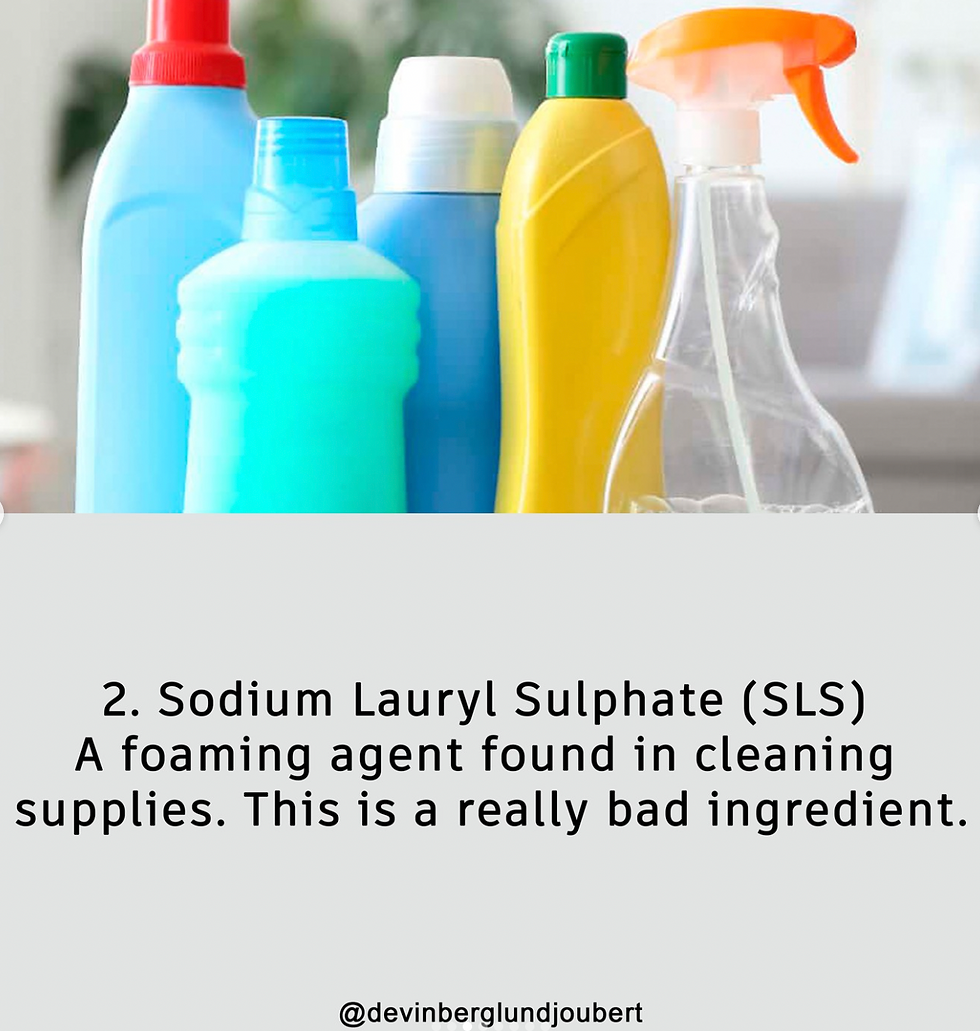
This one is a bad one. It's an irritating chemical that's actually a foaming agent. It's what makes the tooth past bubbly and foamy.
Some other areas you can find SLS:
Body washes
Shower gels
Facial cleansers
Shampoos
Bubble Bath
Hand soaps
Cleaning products in your home
Detergents
Toothpastes
If you think that's bad, it's also included in some foods. Eek. I didn't know that. It's found in dried egg products, marshmallows, and also some fruit juices.

Why you don't want to use this ingredient
Allergic Reactions: Some individuals may be sensitive or allergic to propylene glycol. Allergic reactions can range from mild skin irritation to more severe symptoms such as hives, itching, or respiratory issues. Those who are prone to allergies or have sensitivities should be cautious when exposed to products containing propylene glycol.
Skin Irritation: In certain concentrations, propylene glycol can cause skin irritation, especially in individuals with sensitive skin. Direct contact with concentrated forms of propylene glycol may lead to redness, itching, or inflammation. Products containing propylene glycol should be used as directed, and individuals experiencing skin irritation should discontinue use and seek medical advice if necessary.
Potential for Systemic Effects: While propylene glycol is generally considered safe for use in food and pharmaceuticals, some concerns have been raised about its potential to cause systemic effects when ingested or absorbed in large quantities. High doses of propylene glycol have been associated with gastrointestinal symptoms such as nausea, vomiting, and diarrhea.
Hygroscopic Properties: Propylene glycol is hygroscopic, meaning it absorbs water from its surroundings. In certain applications, such as e-liquids for vaping, propylene glycol can contribute to dryness of the mouth and throat, as well as increased thirst. Proper hydration is essential when using products containing propylene glycol to mitigate potential dryness effects.
Limited Long-Term Studies: While propylene glycol has been extensively studied for its safety and efficacy in various applications, there is still limited research on its long-term effects on human health. More research is needed to fully understand the potential implications of prolonged exposure to propylene glycol, especially at higher concentrations or in specific populations.
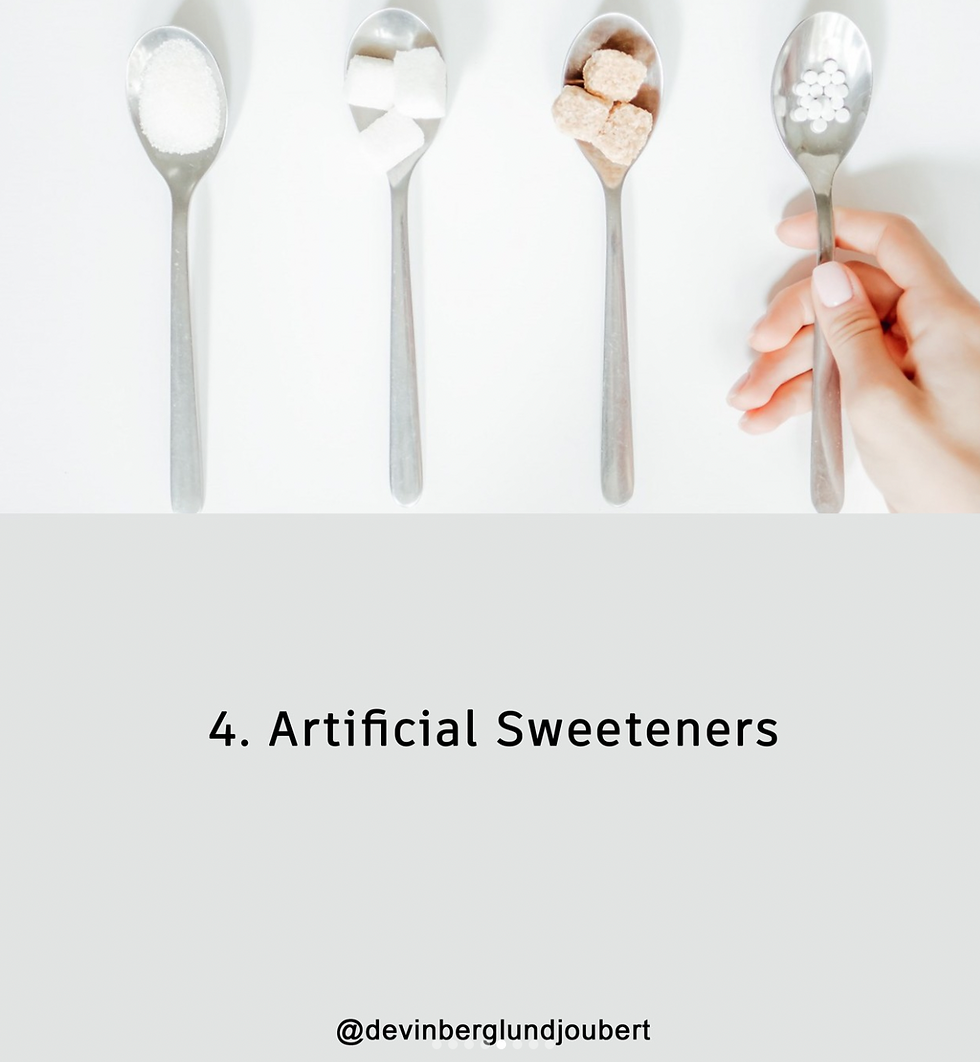
Some reasons that artificial sweeteners aren't good for you:
Metabolic Effects: Some studies suggest that artificial sweeteners may disrupt metabolic processes and interfere with the body's ability to regulate calorie intake and blood sugar levels. This disruption could potentially lead to weight gain, metabolic syndrome, and insulin resistance.
Impact on Gut Health: Artificial sweeteners can alter the composition of gut bacteria, which play a crucial role in digestion, metabolism, and overall health. Imbalances in gut bacteria have been linked to various health issues, including obesity, diabetes, and inflammation.
Association with Chronic Diseases: While research is ongoing, some studies have suggested potential associations between artificial sweetener consumption and an increased risk of chronic diseases such as type 2 diabetes, cardiovascular disease, and certain cancers. However, more research is needed to establish causality definitively.
Don't Help With A Potential for Overeating: Because artificial sweeteners provide sweetness without calories, they may disrupt the body's natural ability to regulate food intake and appetite. Some studies have suggested that consuming artificial sweeteners could lead to increased cravings for sweet foods and overeating in the long term.

Why you don't want to use DEA:
Carcinogenicity: Nitrosamines are classified as carcinogens, meaning they have the potential to cause cancer in humans. Research studies have linked exposure to nitrosamines with an increased risk of various cancers, including stomach, esophageal, bladder, and pancreatic cancer.
Skin and Eye Irritation: High concentrations of DEA can cause skin and eye irritation, particularly with prolonged or repeated exposure. Individuals with sensitive skin may experience redness, itching, or inflammation when using products containing high levels of DEA.
Respiratory Irritation: Inhaling DEA vapors or mists from products such as aerosol sprays or air fresheners may irritate the respiratory tract and contribute to symptoms such as coughing, wheezing, or shortness of breath, particularly in individuals with asthma or respiratory conditions.
Environmental Concerns: DEA and its derivatives can persist in the environment and contribute to water and soil contamination when not properly disposed of. Additionally, the production and use of DEA-containing products may release harmful emissions into the atmosphere, contributing to air pollution and environmental degradation.
Regulatory Restrictions: Due to concerns about its potential health effects, DEA and certain DEA-containing compounds are subject to regulatory restrictions in some countries. For example, the European Union has banned the use of certain DEA compounds in cosmetic products due to their potential to form nitrosamines.

Parabens are a class of synthetic preservatives commonly used in cosmetics, personal care products, pharmaceuticals, and food to prevent the growth of bacteria, mold, and yeast. While parabens have been widely used for decades due to their effectiveness and low cost, concerns have been raised about their potential health effects.
Endocrine Disruption: Parabens have been shown to mimic estrogen in the body. They can disrupt the endocrine system by binding to estrogen receptors, potentially interfering with hormone function. Research suggests that exposure to parabens may disrupt hormone balance and contribute to reproductive problems, developmental disorders, and certain types of cancer.
Accumulation in the Body: Parabens are absorbed through the skin and can enter the bloodstream and accumulate in the body over time. Studies have detected parabens in urine, breast tissue, and other bodily fluids, indicating widespread exposure to these chemicals. Prolonged or repeated exposure to parabens may increase the risk of adverse health effects.
Potential Carcinogenicity: While the evidence is inconclusive, some studies have suggested a possible link between paraben exposure and an increased risk of breast cancer. Parabens have been detected in breast tumor tissue, although it's unclear whether their presence directly contributes to cancer development or is simply a coincidence.
Skin Irritation and Sensitization: Parabens can cause allergic reactions and skin irritation, particularly in individuals with sensitive skin. Symptoms may include redness, itching, burning, and inflammation. Parabens are among the most common causes of contact dermatitis, a type of skin rash that occurs when the skin comes into contact with an allergen or irritant.
Environmental Impact: Parabens are not effectively removed during wastewater treatment and can enter the environment, where they may persist and accumulate in soil and water. Parabens have been detected in aquatic ecosystems, raising concerns about their potential impact on aquatic organisms and ecosystems.
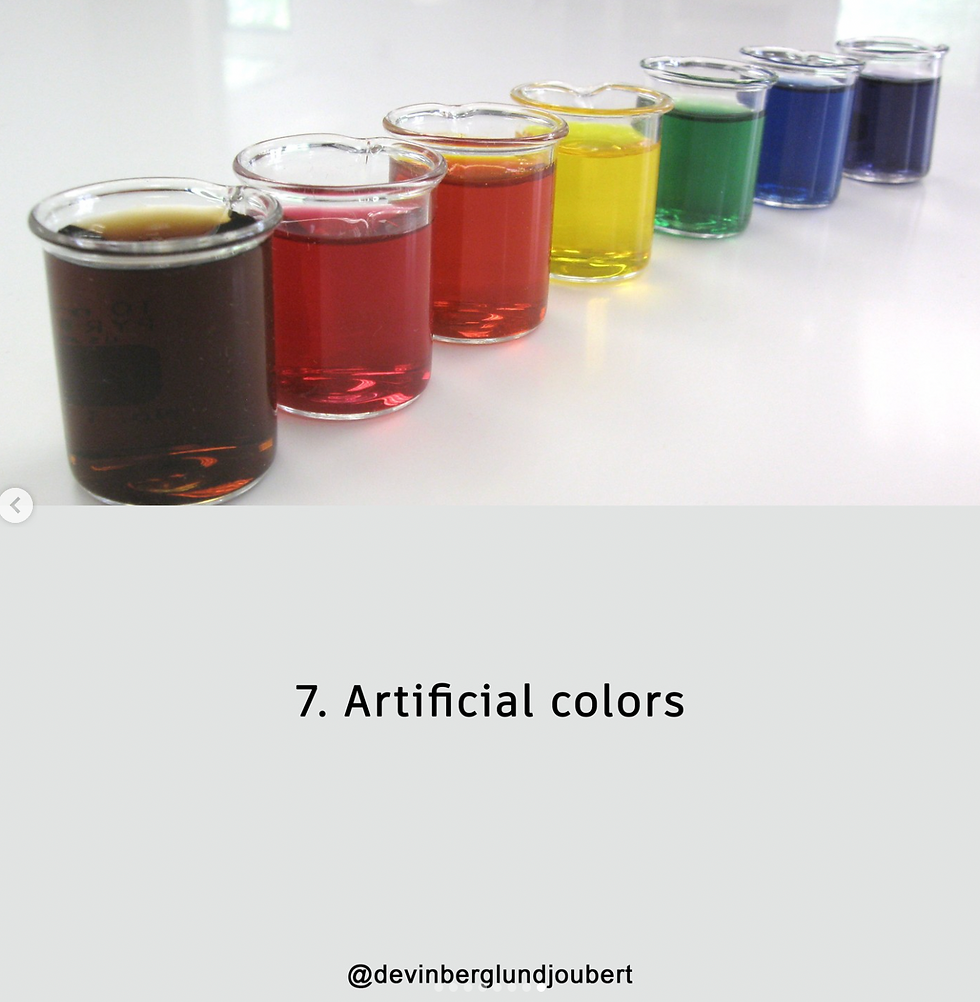
Why you'll want to avoid artificial colors:
Hyperactivity and Behavioral Issues in Children: Some studies have suggested a possible link between artificial food colors and hyperactivity, attention deficit hyperactivity disorder (ADHD), and other behavioral issues in children. While the evidence is not conclusive, some children may be more sensitive to certain food dyes, and consuming products containing artificial colors may exacerbate behavioral problems in susceptible individuals.
Allergic Reactions: Artificial colors can cause allergic reactions in some individuals, particularly those with sensitivities or allergies to specific dyes. Symptoms may include hives, itching, swelling, nasal congestion, and difficulty breathing. Certain artificial colors, such as tartrazine (Yellow 5) and Red 40, are more commonly associated with allergic reactions.
Carcinogenicity Concerns: Some artificial colors have been evaluated for their potential carcinogenicity, or ability to cause cancer, in laboratory studies. While most artificial colors currently approved for use in foods and cosmetics have undergone safety assessments and are considered low risk, concerns persist about their long-term effects on human health, especially with prolonged or high-dose exposure.
Neurotoxicity: Animal studies have suggested that certain artificial colors may have neurotoxic effects, meaning they could potentially damage or disrupt the normal function of the nervous system. More research is needed to understand the mechanisms by which artificial colors may affect neurological health and whether similar effects occur in humans.
Potential Effects on Asthma and Allergies: Some studies have suggested a possible association between artificial colors and an increased risk of asthma and other respiratory allergies, particularly in children. However, the evidence is limited, and further research is needed to determine the extent of this relationship.
And Now That We Know What To Avoid, What Are The Best Toothpastes You Can Buy?
Dr. Bronners (I've made the decision to stop buying from Dr. Bronners because I've found their values don't match up with my own. It's important to me to support companies whose principles resonate with mine.)
So Devin, You Don't Buy Those, Then What Do You Use Instead?
I never thought I'd be one to say this, but right now I've been making my own toothpaste. I like that you don't have to pay an arm and a leg for a healthy brand, that it isn't taxed, and that I know what's in it.
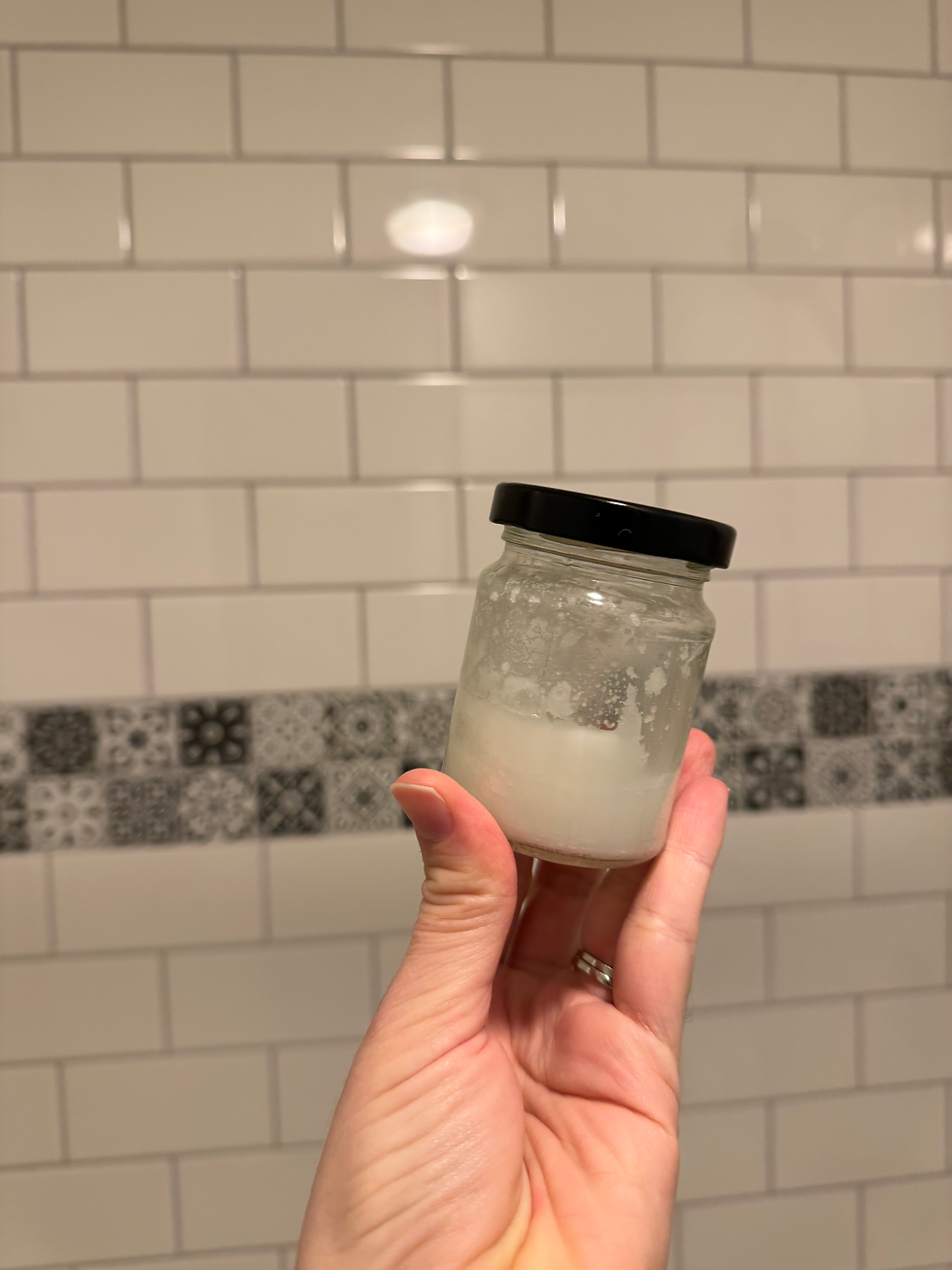
Here's my recipe. Super simple:
A small glass jar - Something like this.
Baking Soda - link
Essential Oils - link
Coconut Oil - link
What You'll Need:
4 tablespoons of coconut oil
2–4 tablespoons of baking soda
20 drops of essential oil of choice. (My go to is peppermint.)
Up to 1 tablespoon xylitol powder (This is optional. I haven't tried this yet, but it will make it have a sweeter taste. I haven't noticed anything without it, but will try this in the future.)
How To Make It:
Place your glass container with the coconut oil into a bowl of hot water to liquefy the coconut oil.
Then, measure all of the ingredients into the bowl and stir it all until it's completely blended.
Then you can store your toothpaste in a lidded glass jar and use it.








Comments